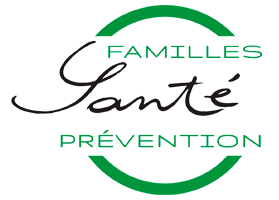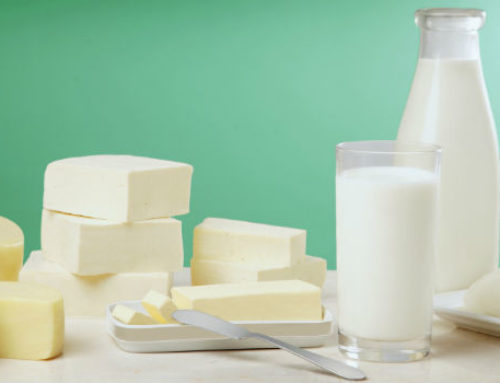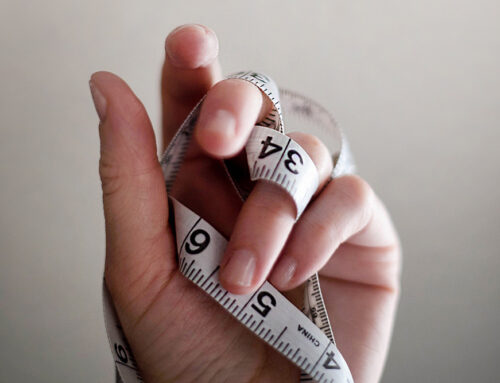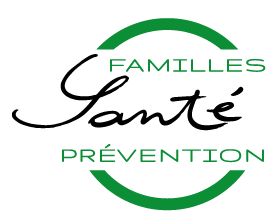Science Has Only Known Me for a Hundred Years!
Will Your Summer Vitamin D Reserves Last The Winter?
Vitamin D History: An Epic Adventure Loaded with Nobel Prizes
I’m in Everyone’s Conversations
I have become trendy: You can find me in all shape and sizes. But your body is perfectly capable of manufacturing me if a few conditions are respected. Fact is, 2/3 of my reserves in your body are manufactured at skin level through the action of the sun. This is endogenic vitamin D. The other third is easily obtainable in food: this is exogenic vitamin D.
Some people maintain that the whole population is lacking vitamin D (what we call hypovitaminosis). Are we that certain of that? Would there be, as some imply it, a new sanitary scandal coming? And if so, which is it?
If you believe today’s trending health talk, I, Vitamin D, am useful for everything. Not only do I strengthen your bones, prevent rickets (underweight children); they say I would even prevent cancer and other diseases. It is normal that all oncologists know my role, but so do also all people that prescribe me whether patients need me or not.
Since Vitamin D receptors (VDR) were discovered, I am said to contribute to hormone balance. In all humans, the gene that codes VDR is Chromosome 12.
VDRs are proteins found in the nucleus of cells that bind to a specific molecule such as I, in my molecular form 1.25(OH)2D. I have specific receptors at enterocyte level that ensure my transfer from the small intestine to the blood. This makes sure that I will be absorbed. Everyone wonders about the same thing: what happens in a human body when I am lacking, or when I am in excess? What easily identifiable signs can they rely on to know if I am deficient?
That is the meaning of my intervention in this article. You must understand who I am, what I am really useful for in your body, and when I am really indicated.
What Do They Call Me A “Vitamin” And Why “D”?
The Polish biochemist Kazimierz Funk (1884)1967), in 1912, chose my name in his book Vitamins. He uses the term “vitamin” to refers to 4 chemical molecules meant to prevent four diseases, hence 4 letters:
– Developmental diseases: Frederick Gowland Hopkins (1861-1947) discovered in 1906-07 latest auxiliary nutritional factors that got their official names later, in particular Vitamin A in fatty foods. He got the Nobel Prize of Medicine in 1929.
– Bero-beri or deep fatigue, is responsible for heart failure and neurological disorders. It is healed by Vitamin B1, also called Thiamine or Neurine. You can find it in particular in the film surrounding rice. – Scurvy is healed by Vitamin C, and that’s where it get its chemistry name “ascorbic acid”. It healed sailors that would travel to distant lands and had access to neither lemons nor orange on their travels.
– Rickets in children is healed with Vitamin D. As “ultravitamine 4” or Vitamin D, I am 4th of the list. Thanks to me, within a century, rickets causing children to be underweight disappeared.
The word Vitamin (i.e. “animates life”) stems from words “vita” for life, and suffix “anime” for making alive, nitrogenous chemical radical present in many vitamins. But I, Vitamin D, do not possess this radical. My composition is very close to the composition of cholesterol, and have no relations to nitrogenous molecules, or only with receptors that absorb me in order to transmit my messages.
How Scientists Discovered Me: Through The Treatment Of Rickets
Rickets was known since antiquity but described by British physicians from 1645-1950. It affected children living in poverty. It is a very serious disease that badly warps the bones and affects growth.
From 1782 onwards, a British physician called Dale-Percival recognizes the anti-rickets powers of cod liver oil (called Lysi by Norwegians, which means light). The German D Schütte confirmed the usefulness of this oil in 1824 to treat rickets. In 1826, the French Pierre Fidèle Bretonneau (1778-1862) is the first that will associate life-long rickets to life away from light and will recommend taking cod liver oil to patients with rickets.
In 1861, Armand Trousseau (1801-1867), a student of Bretonneau, proclaims that rickets is due to a lack of exposure to the sun by children as well as nutritional deficiencies.
In the winter of 1918-19, Berlin-based pediatrician Kurt Huldschinky (1883-1940) treats rickets children with “actinotherapy” or radiotherapy with powerful lamps generating UV lights. But comparatively, UV generated through natural heliotherapy are more effective than cod liver oil. UVs become health generative. From that moment, I was born, but not yet officially.
In 1921, Edward Mellanby (1884-1955) experimented on dogs and demonstrated that rickets was due to deficiencies in a fat-soluble vitamin, which he believed to be Vitamin A.
In 1922 Elmer Verner McCollum (1879-1967) discovered that cod liver oil remained a good remedy for rickets, even when Vitamin A was destroyed. This means that there is another fat-soluble factor that he names “calcium dropping/depositing vitamin”, later named Vitamin D. McCollum will be baptized “Dr Vitamin” by Time Magazine.
I am Fat-Soluble. I Stem From Cholesterol. They Are Different Types of Vitamin D.
In 1924-25, several American researchers brought the existence of Vitamin D to light, and the way it was manufactured under the skin thanks to the action of ultra-violets.
In 1928, German chemist Adolf Otto Reinhold Windaus (1876-1959) won the Nobel Prize of chemistry in recognition of his research into the formation of sterols and their link to vitamins. The discovery shows that Vitamin D does not possess the amine radical, but the cholesterol nucleus.
In 1932 and 1936, both vitamins, the one present in cod liver oil and the one manufactured under the skin, were isolated and their structure was defined. However their working mechanism was understood only 30 years later.
In 1952, Robert Burn Woodward (1917-1979) accomplished the first synthesis of D3 vitamin, for which he is recognized with a Nobel Prize in Chemistry in 1965.
In 1960, Roald Norman, born in 1937 in Poland, discovered the three metabolites of Vitamin D, among which calcitriol in blood, discovered in 1978 using stereochemistry (spatial arrangement of molecules). His work was rewarded with a Nobel Prize in Chemistry in 1981. Nevertheless, it is now known that blood calcitriol levels do not accurately reflect vitamin D levels in your body.
In 1968, Hector F. De Luca, born in the United States in 1930, isolated an active substance in the blood, 25 OH Vitamin D manufactured by the liver from Vitamin D. It was considered an indicator of individual Vitamin D status.
In 1980 research discovered that the cells of many body organs do possess receptors specialized in Vitamin D, i.e. VDR or Vitamin D Receptor, a protein first synthesized in the 2010s.
In humans, the gene coding VDR is located on chromosome 12. Thus, my action would affect 500 genes. My function goes beyond the bones. I am here to maintain the immune system, acting on white blood cells, pancreas cells. To some scientists, I would also play a role in diabetes.
My Various Chemical Forms Depend On Where I Was Sourced: I Mostly Need Sun And Cholesterol.
Contrary to water soluble vitamins that are eliminated in urines, fat soluble vitamins (that are soluble in fats) can be stored in the body for some time. I am stored under your skin through photosynthesis in the form of Vitamin D1 or pre-Vitamin D. I am also present in the muscles, the liver and your body’s fat tissue, depending on where specific receptors are located. It is the sun, shining on the skin, that provides for my biological activity.
I am manufactured from a cholesterol-derived chemical under the action of sun UVBs. So, 90% of your needs are covered by sun exposure. On average, 30 minutes of face and bare arms sun exposure will suffice. To sum up, I am manufactured from a cholesterol derivative through exposure to sun UVB.
However, sun-manufactured Vitamin D is not immediately active. Storage for winter will mostly occur during the summer (in the liver, muscles and fat tissue).
Summer exposure to the sun in a bathing suit allows for a minimal erythemal dose (MED) that provides light coloring of the skin – not sunburns! It manufactures as much vitamin D as if we consumed 10,000 to 25,000 IU of Vitamin D2 orally.
Vitamin D2 i.e. ergocalciferol or ergosterol, is found in mushrooms and rye ergot: it has vegetable sources.
Vitamin D3, i.e. cholecalciferol or calciferol, is manufactured by our bodies. It is also isolated from fish, i.e. an animal source. However, animal-sourced vitamin D3 is not immediately active. Blood work easily reveals a person’s vitamin D status.
The only active form of Vitamin D is CALCITRIOL
Its chemical formula is 1 alpha, 25(OH) 2 D
For an Active Form, I Need Working Gut, Liver And Kidneys
Indeed, in order to be active, I, Vitamin D, needs to convert into 1.25 di-hydroxy-vitamin D or calcitriol after going through your liver and the kidneys.
Here is how I work under your skin, where I can manufacture up to 90% of your needs with the help of the sun.
Most body cells, particularly the ones of the skin, contain cholesterol or its precursor, especially the one manufactured by the skin and gut cells. 7-dehydrocholesterol, which is present in deep skin cells, is the immediate precursor of cholesterol.
7-dehydrocholesterol is transformed by UVB into pre-vitamin D3, then “native” Vitamin D3 (cholecalciferol) after exposure to UVB at a wave length of 290 to 310 nm. This depth of UVB exposure reaches the deep layer of the skin, i.e. below the layer where melanin is manufactured, which is a pigment that protects the skin against sun UV.
So: BEWARE not to wear too much sunscreen: it hinders passage of the sun, which prevents the skin from manufacturing the vitamin D that you need.
Here is what Vitamin D becomes when taken orally:
– First, I, oral Vitamin D, pass through the digestive barrier, in the upper region of the small intestine in the presence of bile salts contained in liver-generated bile.
I am the first active metabolite of vitamin D calcifediol, even before the hepatic cycle: I am immediately active at small intestine level, and I assist absorption of calcium and phosphates. Since 25-OH-D3 is less fat-soluble than vitamin D3, it isn’t as easy to store in the fat than Vitamin D3 and is more easily transformed into 125(OH)2D3 at kidneys level.
– I am then directed towards the slow lymphatic circulation and am carried by a protein that protects me from oxidation.
– Once I have reached the liver, I am hydroxylated a first time (i.e. I catch a OH radical) and become 25OH D3.
– Finally, I travel toward the kidney to be hydroxylated a second time and catch a second OH radical, hence becoming active D3 vitamin, i.e. Calcitriol.
Some cells of the lung, prostate, breast and lymph node and even the brain, adrenal, and ovary as well as some lymphocytes B and T from the wall of the aorta possess my specific receptor: VDR.
They have the capacity to synthesize calcitriol from my circulating form, especially if my plasma concentration isn’t sufficient.
This tells you all I can do! Know you are starting to know me!
Calcitriol, like ParaTHormone, increases the presence of Calcium Ca++ in the blood because:
- It releases calcium of the bones into the blood;
- It increases digestive calcium absorption (and also Indirectly phosphor absorption);
- It limits calcium loss in the kidneys and urine;
- Your body uses 5000 UI D3 vitamin per day. In order to keep my level of calcifediol over 30 ng/mL, you will need to ingest 1000 UI Vitamin D3 per day.
Do You Want To Know Your Vitamin D Levels?
My half-life in the form of Vitamin D stored in the body lasts from 4 to 6 months.
The half-life of my hydroxylated metabolites (with OH radical) lasts from 7 to 14 days and only 4-5 hours for a very active calcitriol. Vitamin D as measured in the blood by your regular lab is: 25 OH vitamin D or Calcifediol.
Levels are assessed in 4 different units:
- International units UI
- Micrograms μg/L : 1microgram vitamine D = 40 UI
- Or nanomoles nmol/L
- Nanograms ng/ml
These units compare the following way: 1 UI : 0.025 μg calciferol or 1 μg = 40 UI. Comparing ng/mL to nmol/L requires multiplying ng by 2.5.
Levels are considered normal between 30-100 ng/ml or 75 and 250 nmol/L.
There is a toxic limit: levels shouldn’t go higher than 250 nmol/L i.e. 100 ng /L
Obviously, I haven’t told you everything about every activity I am involved in in your body, far from it. Two additional letters will tell you more about it.
Until next time,
Professor Henri Joyeux and Jean Joyeux, nutritionnist.
Endnotes:
1 –“The history of Vitamin D, a hundred-year-old hormone looming less large than initially and transiently expected” – J.L.Schlienger, L. Monnier – Médecine et maladies métaboliques – Elsevier, Vol. 13, Issue 4, June 2019 – https://doi.org/10.1016/S1957-2557(19)30106-3
2 – “Statut vitaminique, rôle extra osseux et besoins quotidiens en vitamine D” – Rapport, conclusions et recommandations – Académie de Médecine – February 2012.
3 – Chromosome 5 hosts the gene of a complex protein called Hydroxy-Methyl-Glutaryl-CoA reductase, a specific enzyme (HMG-CoA reductase or HMGCR), which manufactures cholesterol precursors. Obviously, this is what statins, the medicine fighting cholesterol, target.
The Letter of Professeur Joyeux is an independent and free information service. It specializes in providing the wider public and families with disease prevention information.
You have a Personal Health Question? (Confidential response) or you wish to enjoy our exclusive services? Become an exclusive member of our association for one year by clicking HERE







